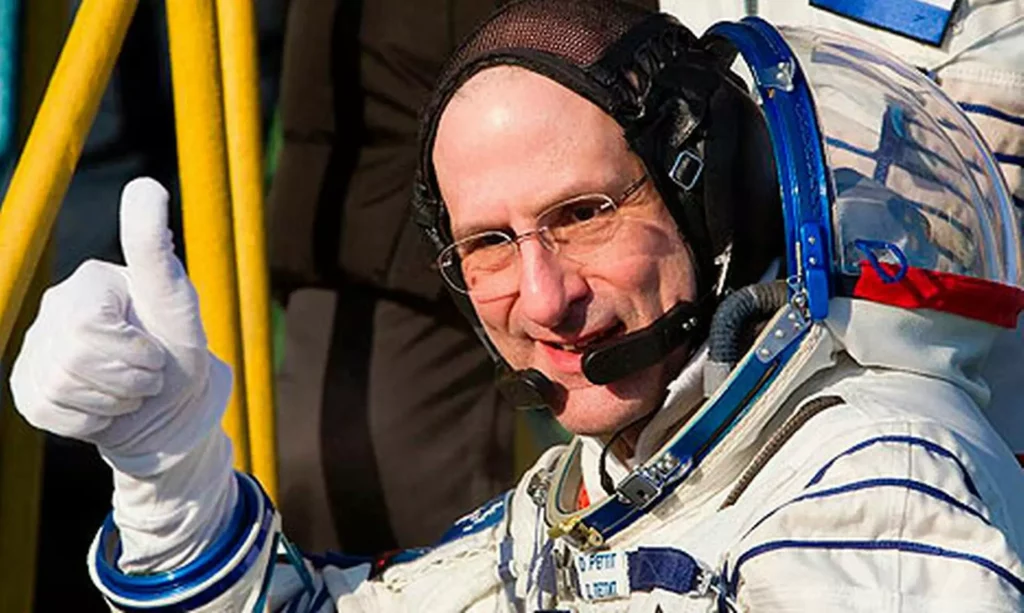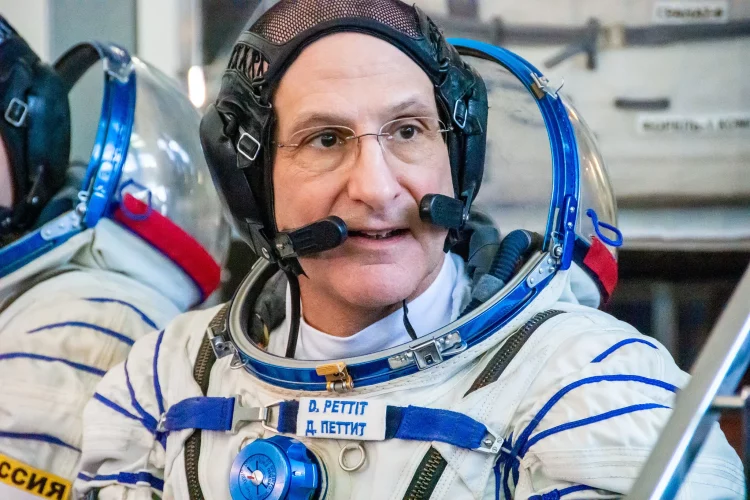In preparation for the upcoming launch of its latest space mission, NASA has hosted a series of in-depth interviews with astronaut Don Pettit, offering an exclusive glimpse into the experiences, expectations, and expertise of this seasoned space traveler. Pettit, an experienced astronaut with extensive knowledge in both spaceflight and science, has been a key figure in NASA’s space exploration efforts. This article delves into the rich tapestry of Pettit’s career, his upcoming mission, and the significance of his interviews in the broader context of space exploration.
1. The Astronaut Don Pettit
Don Pettit, a veteran NASA astronaut, has made significant contributions to space science and exploration. His career, marked by numerous spaceflights and research missions, showcases his dedication to advancing our understanding of space and its effects on human physiology and technology.
1.1 Early Life and Education
Don Pettit was born on June 21, 1958, in Silverton, Oregon. His fascination with space began early, inspired by the Apollo missions and the subsequent achievements in space exploration. Pettit’s academic journey began with a Bachelor of Science degree in Chemical Engineering from Oregon State University, where he honed his skills in engineering and science.
Following his undergraduate studies, Pettit pursued a Master’s degree in Chemical Engineering at the University of Arizona. His research focused on the study of chemical processes in microgravity, an area that would later become central to his work as an astronaut. Pettit’s academic background laid a strong foundation for his future endeavors in space research and exploration.
1.2 NASA Career and Spaceflights
Pettit was selected as a NASA astronaut in 1996. Since then, he has been involved in several high-profile missions. His first spaceflight was aboard the Space Shuttle Endeavour during the STS-126 mission in November 2008, which was part of the assembly and maintenance of the International Space Station (ISS). Pettit’s contributions to this mission were instrumental in advancing the ISS’s capabilities.
Pettit’s second spaceflight occurred in 2011 when he flew to the ISS as part of the Expedition 30/31 crew. During this mission, Pettit conducted a variety of scientific experiments and maintenance tasks, furthering our understanding of long-duration spaceflight’s impact on the human body and various scientific processes in microgravity.
2. The Upcoming Mission
Don Pettit’s upcoming mission promises to be a landmark event in his career. The mission, part of NASA’s ongoing efforts to explore and utilize space, will focus on a range of scientific experiments and technological advancements. The preparation and execution of this mission involve meticulous planning and coordination among various teams.
2.1 Mission Objectives
The primary objectives of Pettit’s upcoming mission include:
- Scientific Research: Conducting experiments related to material science, biology, and physics in microgravity. These experiments aim to provide insights into fundamental scientific questions and practical applications, including materials that can be used in future space missions.
- Technology Testing: Testing new technologies and systems that could enhance the capabilities of future space missions. This includes evaluating advancements in spacecraft systems, life support technologies, and space habitats.
- International Collaboration: Strengthening international partnerships by working closely with astronauts and scientists from other space agencies. This collaboration is crucial for advancing space exploration and fostering global cooperation in scientific research.
2.2 Prelaunch Preparations
The prelaunch preparations for Pettit’s mission are rigorous and comprehensive. This phase involves several key activities:
- Training: Extensive training sessions are conducted to ensure that Pettit and his team are well-prepared for the mission’s challenges. This includes simulations of various scenarios they may encounter in space, from technical malfunctions to emergency procedures.
- Technical Briefings: Pettit participates in detailed briefings with engineers and mission planners to review the mission’s objectives, procedures, and potential risks. These briefings ensure that all team members are aligned and ready for the mission.
- Media Engagement: As part of NASA’s outreach efforts, Pettit engages with the media to share insights into the mission and his experiences. These interviews provide valuable information to the public and inspire the next generation of scientists and engineers.

3. The Significance of Pettit’s Interviews
The prelaunch interviews with Don Pettit offer a unique opportunity to gain insights into the world of space exploration from the perspective of an experienced astronaut. These interviews serve several important purposes:
3.1 Public Engagement and Education
By participating in media interviews, Pettit helps to engage the public and raise awareness about the mission and space exploration in general. His explanations of complex scientific concepts and mission details make space exploration more accessible and understandable for a broad audience. This engagement fosters public interest and support for space programs, which is crucial for the continued advancement of space science.
3.2 Inspiring Future Generations
Pettit’s career and experiences serve as an inspiration to aspiring scientists, engineers, and astronauts. His dedication, expertise, and passion for space exploration demonstrate the possibilities that can be achieved through hard work and commitment. His interviews highlight the exciting opportunities in space science and encourage young people to pursue careers in STEM fields.
3.3 Providing Insight into Space Missions
The interviews offer a behind-the-scenes look at the planning and execution of space missions. Pettit’s descriptions of the challenges and rewards of spaceflight provide valuable insights into the complexities of space missions and the efforts required to ensure their success. This information enhances the public’s understanding of the mission’s significance and the importance of space exploration.
4. The Broader Impact of Space Exploration
Pettit’s mission is part of a larger effort by NASA and international space agencies to advance our knowledge of space and its potential benefits for humanity. Space exploration has far-reaching impacts, including advancements in technology, scientific discoveries, and international cooperation.
4.1 Technological Advancements
Space missions drive technological innovation, leading to the development of new technologies and systems that benefit various industries. The challenges of spaceflight push the boundaries of engineering and technology, resulting in advancements that have applications beyond space exploration. For example, technologies developed for space missions have led to improvements in medical devices, materials science, and communication systems.
4.2 Scientific Discoveries
Scientific research conducted in space provides insights into fundamental questions about the universe and our place within it. Experiments conducted in microgravity can reveal new information about physical processes, biological systems, and material properties. These discoveries contribute to our understanding of the natural world and can lead to new applications and technologies.
4.3 International Cooperation
Space exploration fosters international collaboration by bringing together scientists, engineers, and astronauts from different countries. This cooperation promotes the sharing of knowledge, resources, and expertise, strengthening global partnerships and advancing collective goals. International collaboration in space exploration also supports peaceful relations and mutual understanding among nations.
5. Looking Ahead: The Future of Space Exploration
As Don Pettit prepares for his upcoming mission, the future of space exploration looks promising. Advancements in technology, increased international collaboration, and ongoing scientific research will continue to drive progress in space science.
5.1 Upcoming Missions and Projects
NASA and its international partners are planning a range of exciting missions and projects for the future. These include:
- Artemis Program: NASA’s Artemis program aims to return humans to the Moon and establish a sustainable presence there. The program will pave the way for future missions to Mars and beyond.
- Mars Exploration: Ongoing missions to Mars, including rovers and landers, are providing valuable data about the Red Planet’s geology, climate, and potential for past or present life.
- Space Habitats: Research on space habitats and life support systems is essential for long-duration missions and future human exploration of deep space. Developing reliable and sustainable habitats will be crucial for missions to the Moon, Mars, and beyond.
5.2 The Role of New Technologies
Emerging technologies will play a key role in shaping the future of space exploration. Innovations in propulsion systems, robotics, and artificial intelligence will enhance mission capabilities and expand exploration opportunities. These technologies will enable more ambitious missions and support the development of new space infrastructure.
5.3 Inspiring the Next Generation
The future of space exploration will be shaped by the next generation of scientists, engineers, and explorers. Educational initiatives and outreach programs will continue to play a vital role in inspiring and preparing young people for careers in space science and technology. By fostering curiosity and creativity, we can ensure that the future of space exploration remains vibrant and innovative.
6. Conclusion
NASA’s hosting of astronaut Don Pettit for prelaunch interviews offers valuable insights into the world of space exploration and highlights the significance of his upcoming mission. Pettit’s career, experiences, and contributions to space science exemplify the dedication and expertise required for successful space missions. Through these interviews, the public gains a deeper understanding of space exploration and the impact it has on technology, science, and international cooperation.
As we look to the future of space exploration, the advancements and discoveries made by astronauts like Don Pettit will continue to inspire and drive progress. The ongoing efforts to explore and utilize space reflect humanity’s enduring curiosity and ambition to explore the unknown. With each mission, we move closer to unlocking the mysteries of the universe and achieving new milestones in space science.


















































Discussion about this post